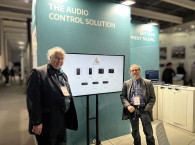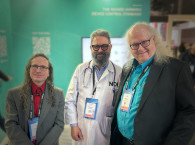
The AES70-2018 revision provides a number of new and improved features; principal among these are:
- An improved connection management mechanism for more powerful, flexible, and efficient control of modern media transport systems using AES67, SMPTE ST-2110-30, AVB, and other standard and proprietary protocols.
- WebSocket and UDP support; AES70-2018 can now run over WebSocket, UDP, or TCP connections.
- Improved support for proprietary extensions to AES70 classes and other elements.
- A new feature for defining common device configuration elements, assisting developers reuse and share frequently recurring designs.
- A new mechanism for managing and executing pre-stored tasks that allows advanced programming of device and system behavior.
Other significant improvements centre on object functionality, with search features, to help controllers discover AES70 device configurations using object names, more flexible object locking, to improve performance in systems with multiple controllers, and a new physical position object, to support object-based audio, advanced loudspeaker array control, geo-aware equipment and robotic features.
The new standards documents are available from the AES Standards site. Links to the relevant AES pages are on the Developer Resources page of OCA Alliance Technical Site, while more details on the 2018 changes may be found on the OCA Alliance website.
Key to the OCA Alliance’s mission is supporting developers become more familiar with the AES70 standard, providing assistance in its implementation. The alliance extends that activity this year, producing and providing additional new tools and support resources free to the industry.
Particularly useful should be OCTT, an open-source tool for testing devices' conformance to the minimum AES70 implementation specification, defined in Part 2 of the AES70 standard. While not a full-blown formal test suite, OCTT is a Windows-based programmer's tool, intended to confirm that devices under development fulfill the minimum requirements for AES70 compliance.
OCTT supports AES70-2015 and AES70-2018 devices. The control file is a free open-source offering that users can extend, to add their own specific tests. Alliance membership is not required to access and use OCTT, and there are no commercially difficult licensing conditions. Architecturally OCTT is an AES70 controller, hence its source code may also be a useful starting point for development of commercial AES70 controllers. OCTT is available via the OCA Technical Site downloads page.
Additionally, the AES70.js javascript library for controller applications has been updated. The new release of AES70.js now supports AES70-2018, is available under the GPL, and supports both web browsers and NodeJs. AES70.js is available from GitHub
The OCA Alliance Technical Committee is now operating a public discussion list for AES70. Anyone can post to the list; alliance membership is not required. Questions and comments may be asked on any and all AES70-related topics. All levels of experience and knowledge are welcome. The list's email address is here.
Posts will be read and, when required, answered by members of the alliance’s Technical Committee. All posts are saved in a searchable public archive. The archive, which will grow into a useful knowledge base for all, is available at https://lists.ocaalliance.com/pipermail/aes70support/.
Anyone who is interested can optionally register to monitor list traffic; the signup page is at https://lists.ocaalliance.com/mailman/listinfo/aes70support.
Links to other related pages are on the OCA Alliance Technical Site home page.
During ISE 2019, OCA Alliance members will give technical demonstrations and presentations at booth #7-H250, and will be on-hand to answer questions and provide additional information on the recent developments in the standard.
“ISE has always been an excellent show for the OCA Alliance, due to the diverse manufacturer, industry, and technical audiences in attendance,” says OCA Alliance Marketing Committee Chair Ethan Wetzell. “2019’s ISE will be particularly exciting with the new tools and offerings that the alliance has prepared for the industry. This year, more products shipping with AES70 than ever before will be shown at alliance members’ booths, so we can look forward to talking about the growing product ecosystem that is available today, and showing people how they can be part of that.”

About AES70
AES70 is an open control and monitoring standard for professional audio and AV media network devices. From a single device and controller, to networks with almost any number of devices and multiple controllers, AES70 provides for powerful, high speed, low cost, robust system control and monitoring of devices from different manufacturers.
AES70 is not itself a media transport, or a means of programming a network device or system control, or generating a user interface. AES70 can be used in conjunction with any available transport protocol (Dante, MILAN, AES67, Cobranet, etc.). Offering interoperability across different media transports and manufacturers’ devices, it enables whole new levels of complex system integration and options as to how and where network devices can be deployed. The architecture operates on commodity Ethernet networking hardware, or via standard 802.11 Wi-Fi.
Control functionality allows system professionals to change and monitor all operating parameters of a network device, including the creation and deletion of signal paths, parameter adjustments for signal processing objects, network device firmware updates and management of access control. Control can also be limited to provide simpler ‘operator’ functionality; for instance, providing just level, mute, power on/off and fault indication.
www.ocaalliance.com






